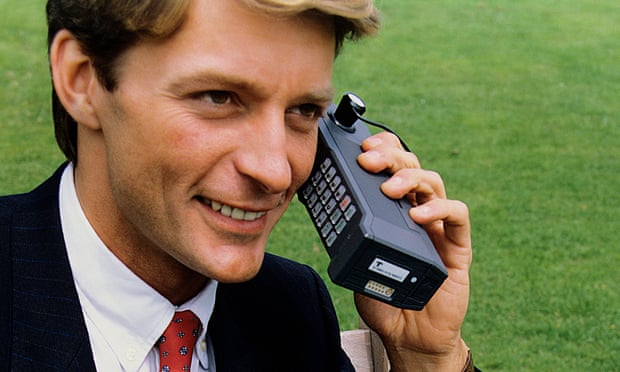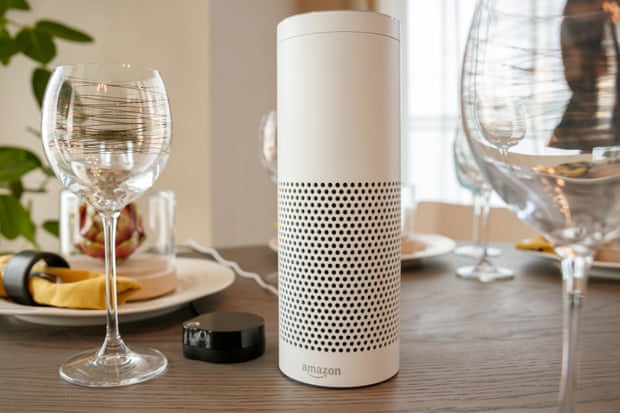What Proof They Have To Say Cell Phones Cause Cancer
O n 28 March this yr, the scientific peer review of a landmark United States regime written report ended that there is "clear evidence" that radiations from mobile phones causes cancer, specifically, a centre tissue cancer in rats that is likewise rare to be explained as random occurrence.
11 contained scientists spent three days at Research Triangle Park, Due north Carolina, discussing the written report, which was done by the National Toxicology Plan of the The states Department of Wellness and Man Services and ranks among the largest conducted of the wellness effects of mobile phone radiations. NTP scientists had exposed thousands of rats and mice (whose biological similarities to humans make them useful indicators of human health risks) to doses of radiations equivalent to an boilerplate mobile user'south lifetime exposure.
The peer review scientists repeatedly upgraded the conviction levels the NTP'southward scientists and staff had attached to the report, fuelling critics' suspicions that the NTP's leadership had tried to downplay the findings. Thus the peer review too found "some evidence" – 1 step below "clear evidence" – of cancer in the brain and adrenal glands.
Not one major news organization in the US or Europe reported this scientific news. Simply then, news coverage of mobile phone rubber has long reflected the outlook of the wireless manufacture. For a quarter of a century now, the manufacture has been orchestrating a global PR entrada aimed at misleading not only journalists, just as well consumers and policymakers about the bodily scientific discipline concerning mobile phone radiation. Indeed, big wireless has borrowed the very aforementioned strategy and tactics large tobacco and large oil pioneered to deceive the public most the risks of smoking and climate change, respectively. And like their tobacco and oil counterparts, wireless industry CEOs lied to the public even after their own scientists privately warned that their products could be dangerous, especially to children.
Outsiders suspected from the start that George Carlo was a front end man for an industry whitewash. Tom Wheeler, the president of the Cellular Telecommunications and Cyberspace Clan (CTIA), handpicked Carlo to defuse a public relations crisis that threatened to strangle his infant industry in its crib. This was dorsum in 1993, when there were only six mobile subscriptions for every 100 adults in the United states of america, but manufacture executives foresaw a booming future.
Remarkably, mobile phones had been allowed on to the US market a decade earlier without whatever regime safety testing. Now, some customers and industry workers were being diagnosed with cancer. In Jan 1993, David Reynard sued the NEC America company, claiming that his wife'due south NEC phone acquired her lethal brain tumour. After Reynard appeared on national tv, the story gained basis. A congressional subcommittee announced an investigation; investors began dumping mobile phone stocks and Wheeler and the CTIA swung into activeness.

A week afterwards, Wheeler announced that his industry would pay for a comprehensive inquiry programme. Mobile phones were already prophylactic, Wheeler told reporters; the new enquiry would simply "revalidate the findings of the existing studies".
Carlo seemed similar a good bet to fulfil Wheeler's mission. An epidemiologist with a constabulary caste, he had conducted studies for other controversial industries. After a report funded past Dow Corning, Carlo had declared that breast implants posed merely minimal health risks. With chemical industry funding, he had ended that low levels of dioxin, the chemical behind the Agent Orangish scandal, were not unsafe. In 1995, Carlo began directing the manufacture-financed Wireless Engineering Inquiry projection (WTR), whose eventual budget of $28.5m made it the best-funded investigation of mobile condom to date.
However, Carlo and Wheeler somewhen clashed bitterly over WTR's findings, which Carlo presented to industry leaders on ix February 1999. By that date, the WTR had commissioned more than 50 original studies and reviewed many more than. Those studies raised "serious questions" about phone safety, Carlo told a closed-door meeting of the CTIA's lath of directors, whose members included the CEOs or top officials of the industry's 32 leading companies, including Apple, AT&T and Motorola.
Carlo sent letters to each of the industry's chieftains on vii Oct 1999, reiterating that WTR'south research had found the following: the risk of "rare neuroepithelial tumours on the outside of the encephalon was more than doubled… in cellphone users"; there was an credible correlation between "brain tumours occurring on the correct side of the caput and the utilize of the phone on the correct side of the head"; and the "ability of radiation from a phone'southward antenna to cause functional genetic damage [was] definitely positive".
Carlo urged the CEOs to practise the right thing: requite consumers "the information they need to make an informed judgment near how much of this unknown risk they wish to assume", peculiarly since some in the industry had "repeatedly and falsely claimed that wireless phones are safe for all consumers including children".
The very next day, a livid Wheeler began publicly trashing Carlo to the media. In a alphabetic character he shared with the CEOs, Wheeler told Carlo that the CTIA was "certain that you have never provided CTIA with the studies you mention", an credible endeavor to shield the industry from liability in the lawsuits that had led to Carlo being hired in the first place. Wheeler charged further that the studies had not been published in peer-reviewed journals, casting doubt on their validity. His tactics doused the controversy, even though Carlo had in fact repeatedly briefed Wheeler and other senior manufacture officials on the studies, which had indeed undergone peer review and would before long be published. In the years to come up, the WTR'southward findings would exist replicated past numerous other scientists in the US and effectually the world. The World Health Organization in 2011 would allocate mobile telephone radiations as a "possible" human carcinogen and the governments of the Great britain, French republic and Israel issued warnings against mobile phone use by children. Notwithstanding, the industry's propaganda campaign would defuse business organization sufficiently that today three out of 4 adults worldwide have mobile phones, making the wireless industry among the biggest on Earth.The key strategic insight animative corporate propaganda campaigns is that a given industry doesn't have to win the scientific argument about safety to prevail – information technology only has to keep the argument going. Keeping the argument going amounts to a win for manufacture, because the apparent lack of certainty helps to reassure customers, fend off government regulations and deter lawsuits that might pinch profits.
Central to keeping the scientific statement going is making it appear that not all scientists agree. Towards that end, and once again like the tobacco and fossil-fuel industries, the wireless industry has "war-gamed" scientific discipline, equally a Motorola internal memo in 1994 phrased it. War-gaming scientific discipline involves playing offence every bit well as defence – funding studies friendly to the industry while attacking studies that raise questions; placing manufacture-friendly experts on advisory bodies such as the World Health Arrangement and seeking to discredit scientists whose views differ from the manufacture'due south.
Funding friendly research has peradventure been the most important tactic, because information technology conveys the impression that the scientific customs truly is divided. Thus, when studies have linked wireless radiation to cancer or genetic damage – every bit Carlo's WTR did in 1999; every bit the WHO's Interphone study did in 2010; and as the United states government's NTP did earlier this year – the industry can indicate out, accurately, that other studies disagree.
A closer look reveals the industry's sleight of hand. When Henry Lai, a professor of bioengineering at the University of Washington, analysed 326 safety-related studies completed betwixt 1990 and 2006, he discovered that 44% of them found no biological outcome from mobile telephone radiation and 56% did; scientists patently were split. But when Lai recategorised the studies according to their funding sources, a different picture emerged: 67% of the independently funded studies found a biological effect, while a mere 28% of the industry-funded studies did. Lai's findings were replicated by a 2007 analysis inEnvironmental Health Perspectives, which concluded that industry-funded studies were two and a half times less likely than contained studies to find health effects.
I key player has non been swayed by all this wireless-friendly research: the insurance industry. In our reporting for this story, we establish not a single insurance visitor that would sell a product-liability policy that covered mobile phone radiation. "Why would we desire to do that?" one executive asked with a chuckle before pointing to more than two dozen lawsuits outstanding against wireless companies, demanding a total of $ane.9bn in damages.
The industry's neutralisation of the safety issue has opened the door to the biggest prize of all: the proposed transformation of society dubbed the Internet of Things. Lauded as a gigantic engine of economic growth, the Internet of Things will not merely connect people through their smartphones and computers simply will also connect those devices to a client's vehicles and appliances, even their baby'south nappies – all at speeds much faster than can currently be achieved.

There is a grab, though: the Internet of Things will require augmenting today's 4G technology with 5G technology, thus "massively increasing" the general population'due south exposure to radiation, co-ordinate to a petition signed by 236 scientists worldwide who have published more than 2,000 peer-reviewed studies and represent "a significant portion of the credentialled scientists in the radiation inquiry field", co-ordinate to Joel Moskowitz, the manager of the Middle for Family and Community Health at the University of California, Berkeley, who helped circulate the petition. Withal, like mobiles, 5G applied science is on the verge of being introduced without pre-market rubber testing.
Lack of definitive proof that a technology is harmful does not hateful the engineering is prophylactic, yet the wireless industry has succeeded in selling this logical fallacy to the earth. The outcome is that, over the past 30 years, billions of people around the world have been subjected to a public-wellness experiment: use a mobile phone today, discover out subsequently if it causes genetic damage or cancer. Meanwhile, the industry has obstructed a total understanding of the science and news organisations have failed to inform the public about what scientists actually think. In other words, this public health experiment has been conducted without the informed consent of its subjects, even as the manufacture keeps its pollex on the calibration.
Mark Hertsgaard is an author and the surround correspondent for the Nation, which published a different version of this article. Mark Dowie is an author and investigative historian based near Willow Point, California
What Proof They Have To Say Cell Phones Cause Cancer,
Source: https://www.theguardian.com/technology/2018/jul/14/mobile-phones-cancer-inconvenient-truths
Posted by: taylorhithorable.blogspot.com


0 Response to "What Proof They Have To Say Cell Phones Cause Cancer"
Post a Comment